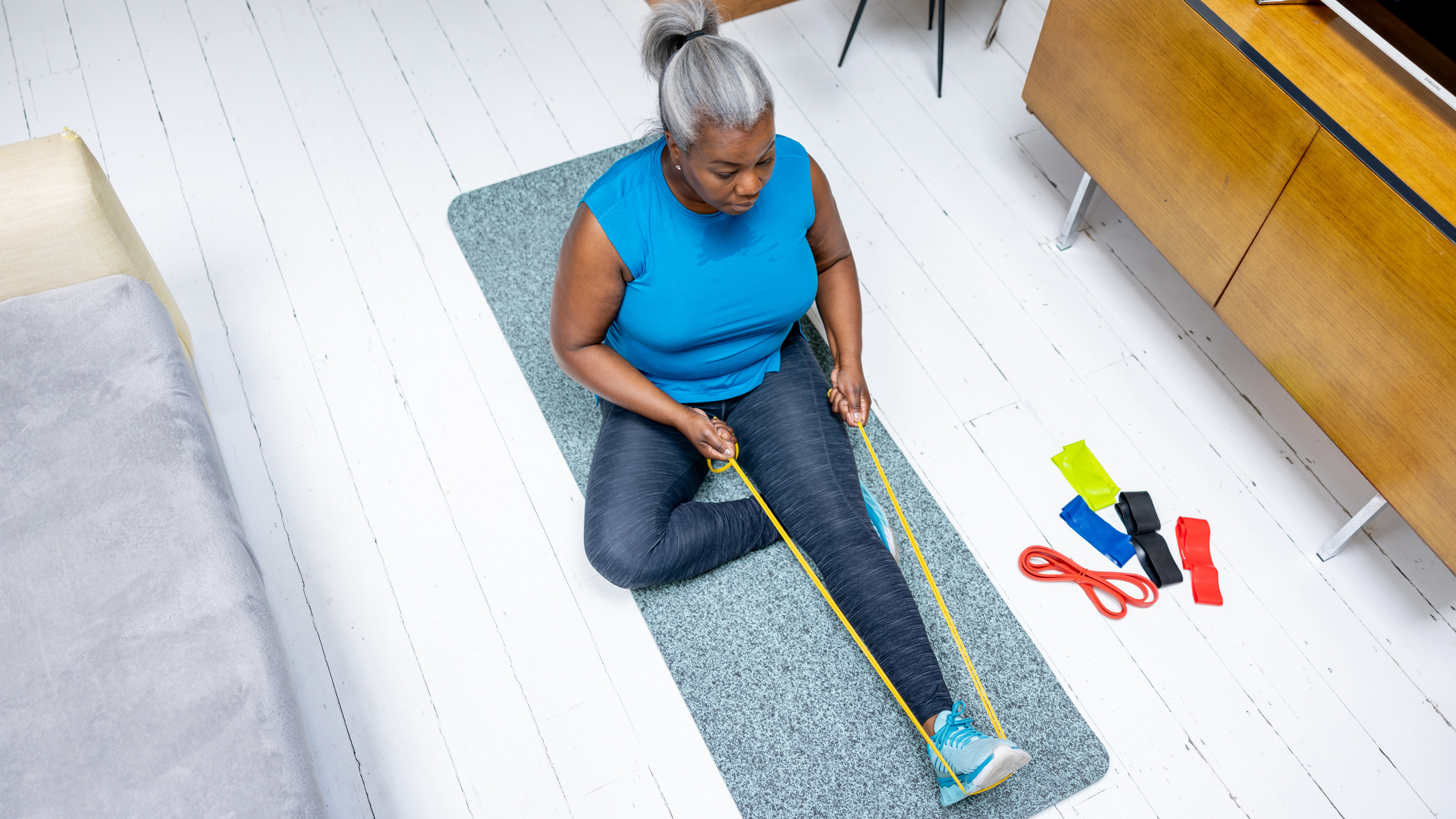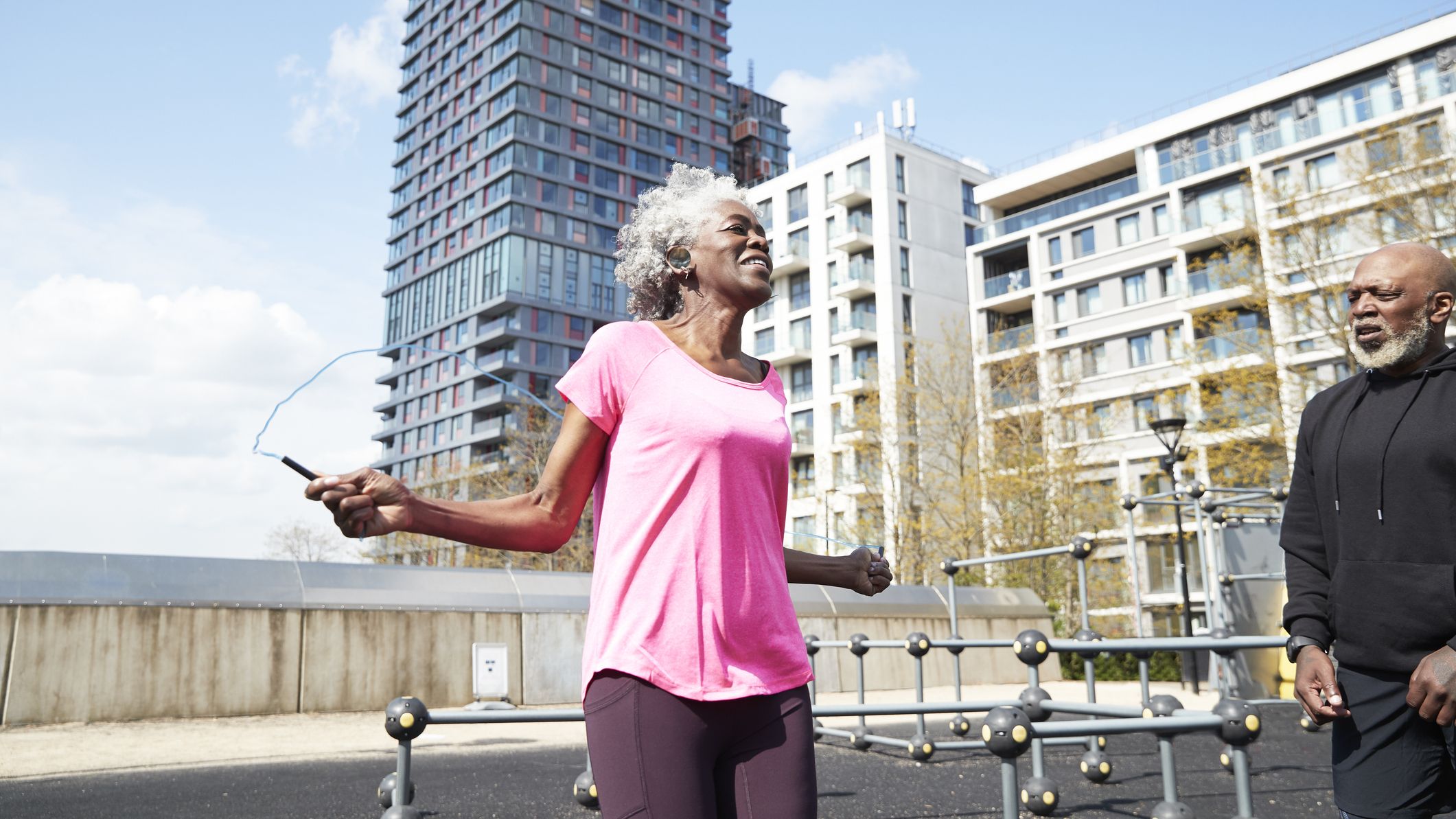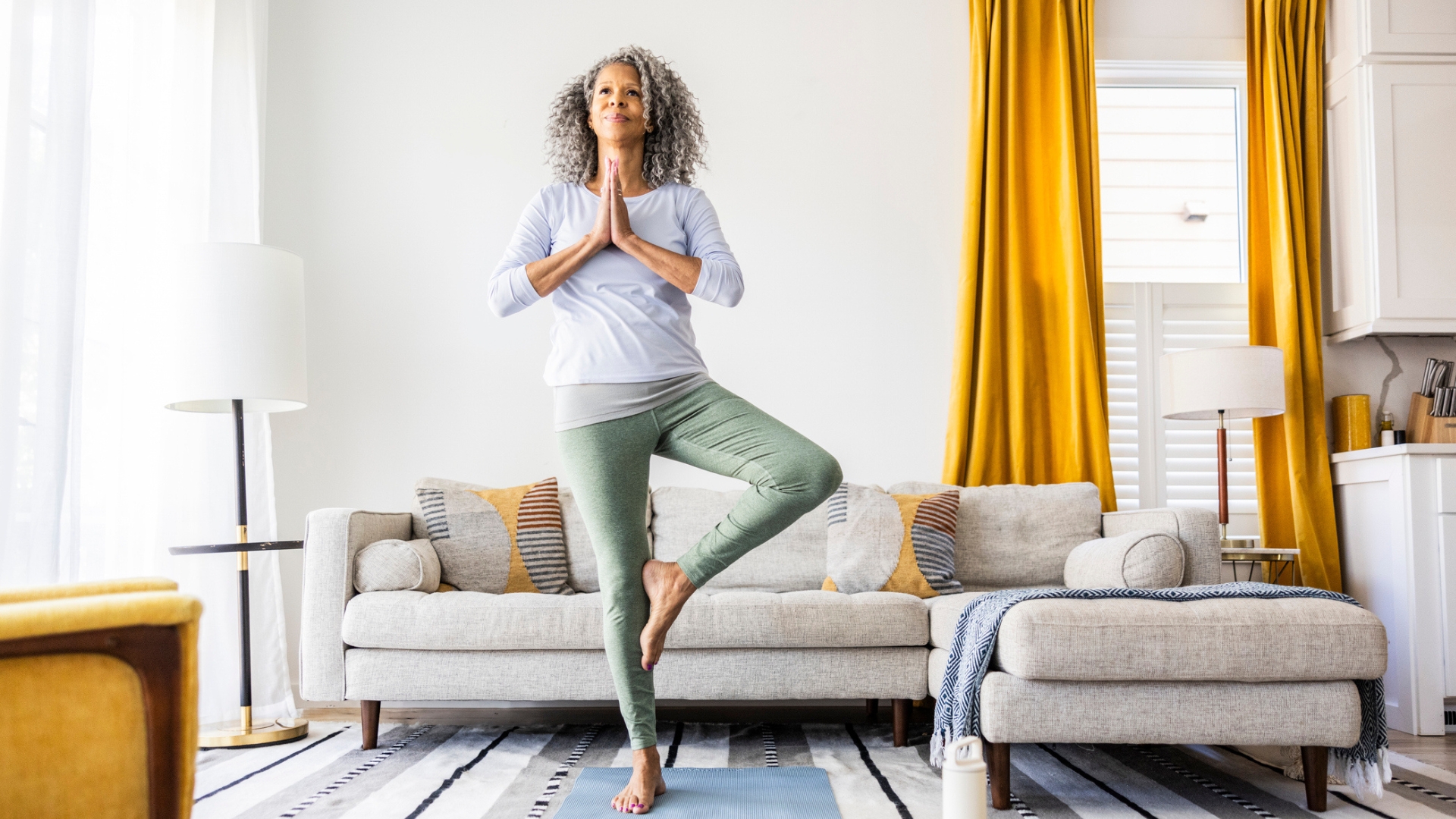A personal trainer shares the best exercises for bone density—and some might surprise you
It’s about more than just lifting weights


When we exercise, we often focus on either muscle strength, aerobic fitness or mobility, but there’s another aspect of our physical health that becomes increasingly important as we age—our bones.
While bone health might not get the same attention, it’s every bit as vital to our long-term health, explains personal trainer Kate Rowe-Ham, founder of Owning Your Menopause, who was diagnosed with osteopenia, the early stage of bone loss that occurs from middle age onwards.
Bone density naturally declines with age, particularly for women around menopause. “That makes us more prone to fractures and injuries, especially in the hips and spine,” says Rowe-Ham.
It’s estimated that one in three women and one in five men over 50 break bones due to osteoporosis, “but the right kind of exercise can make a huge difference,” says Rowe-Ham. “It’s one of the most effective ways to protect and even rebuild bone strength.”
How? Bones are living tissue that break down and rebuild, she explains. “If they’re not challenged, that rebuilding process slows. When we lift, push, pull or jump, we create stress in a beneficial way. This loading signals the body to strengthen the bone in response.”
Many of us are now aware that resistance training is beneficial for our bones, but impact and balance training play a crucial role, too. As does generally adding variety to your fitness routine, according to Rowe-Ham. “Bones respond best to different types of stimulus, so a mix of strength, weight-bearing and even plyometric movements is ideal.”
Below, Kate Rowe-Ham shares her favourite exercises for strengthening bones.
Start your week with achievable workout ideas, health tips and wellbeing advice in your inbox.
Resistance training
1. Squat
“The classic squat is one of the best things you can do for your bones,” says Rowe-Ham. “It loads the hips, legs and spine, the areas most vulnerable to bone loss and helps maintain functional strength for everyday movement.”
How to do it:
- Stand with your feet shoulder-width apart.
- Keeping your chest facing forward, bend your knees and hips to lower slowly, as if sitting back into a chair.
- Pause when your hips reach knee-height, or as low as your mobility allows.
- Drive through your heels to return to standing.
- Add weights once this movement feels easy.
2. Deadlift
“Deadlifts strengthen the entire back of the body and are particularly effective for improving bone density in the spine and hips,” explains Rowe-Ham. “They also enhance posture and core strength.”
The most well-known type of deadlift is lifting a barbell from the floor, but a great place to start is the Romanian deadlift, described below.
How to do a Romanian deadlift:
- Stand with your feet hip-width apart, holding dumbbells in front of your thighs with your palms facing you.
- Engage your core and, keeping your back flat and a slight bend in your knees throughout, hinge forward at your hips and push your hips back to lower the dumbbells down your body.
- Pause when you feel a slight stretch in your hamstrings.
- Drive through your heels and push your hips forward to return to standing.
Start with light dumbbells and focus on perfecting the hip hinge movement.
3. Overhead press
“This move strengthens bones in the arms, shoulders and upper spine—areas that often lose density, in particular for women after menopause,” says Rowe-Ham.
How to do it:
- Stand with your feet shoulder-width apart, holding dumbbells at shoulder height, palms facing forward and elbows out to the sides.
- Engage your core and press the weights straight overhead until your arms are fully extended, making sure you’re not arching your back.
- Lower with control, keeping your ribs down and core tight.
4. Resistance band row
“This exercise targets the spine, another key area for women. Rows strengthen the upper back and shoulder stabilisers, supporting posture and protecting against spinal compression,” says Rowe-Ham.
How to do it:
- Attach a resistance band to a secure anchor point in front of you at chest height, holding the band in both hands with your elbows slightly bent.
- Pull the band back until your elbows are in line with your torso.
- Squeeze your shoulder blades together, then slowly extend your arms to return to the start.
5. Step-up
“Simple but effective, step-ups mimic everyday movement patterns while targeting the hips and thighs,” says Rowe-Ham. “They improve both balance and bone strength.”
How to do it:
- Place your right foot on a sturdy step or bench.
- Drive through your right heel to straighten your leg and bring your left foot onto the bench.
- Step down with your left foot, lowering as slowly as possible.
6. Deficit calf raise
“Don’t underestimate the power of simple movements,” says Rowe-Ham. “Rising onto your toes and lowering your heels creates small, repetitive stresses through the feet and shins, helping to strengthen bones that often weaken with age. They’re a great quick win.”
How to do it:
- Stand with your feet hip-width apart on a step, weight evenly distributed across the balls of your feet and your heels off the edge.
- Lift your heels and rise onto your toes.
- Pause briefly, then slowly lower your heels as far as you can—they should be lower than your toes.
Plyometric training

Short bursts of impact exercise, such as small hops, squat jumps or skipping, can stimulate bone growth by applying quick bursts of powerful force. “Research indicates that even brief, high-impact sessions can enhance bone density in pre-and postmenopausal women,” says Rowe-Ham. “Start small and build gradually.”
How to do it:
- Small hops: Stand tall and perform 10-15 gentle hops on the spot, landing softly through the balls of your feet.
- Squat jumps: Lower into a squat, then drive up powerfully to jump, landing softly and immediately lowering into the next rep. Aim for 8-10 controlled jumps.
- Skipping: Skip for 1-2 minutes at a comfortable pace, resting as needed. Gradually build up over time as your joints adapt.
Weighted walking

Fit&Well contributor Maddy Biddulph wearing a GORUCK weighted vest.
Walking, particularly outdoors, is great for your sense of wellbeing and cardiovascular fitness, but to really benefit bone health, Rowe-Ham says that it helps to add some load. “Wearing a light rucksack or weighted vest increases the impact on the legs and hips, turning a walk into a bone-building workout.”
On your next walk, she also recommends varying your pace by alternating brisk walking with light jogging or uphill bursts. “This creates changes in impact that encourage bone adaptation,” she explains. “Bones thrive on variety, getting stronger when they’re challenged in different ways.”
Balance training

Not every bone-friendly exercise requires heavy weights or impact, Rowe-Ham points out. “Balance training helps prevent falls, which is just as important as improving bone density. Tai Chi, yoga and single-leg exercises all enhance stability and coordination.
“Bone health isn’t about doing one thing perfectly—it’s about doing a mix of things consistently. Combining strength training, impact and balance work gives your bones the stimulus they need to stay strong and responsive,” she continues. “And it’s never too late to start. By building the right foundations now, you’re investing in a more mobile, independent and confident future.”
We have plenty of routines that help develop balance. Try these three balance exercises to start with.

Rosie Fitzmaurice is a health, fitness and beauty journalist and editor, writing about issues related to women’s health, nutrition, exercise, longevity, and sex and relationships.
A Pilates and strength training devotee, cold shower and sauna obsessive, with a very specific coffee order, she loves nothing more than putting the latest wellbeing trends to the test and interviewing scientists and experts to debunk common wellness myths.
You must confirm your public display name before commenting
Please logout and then login again, you will then be prompted to enter your display name.






